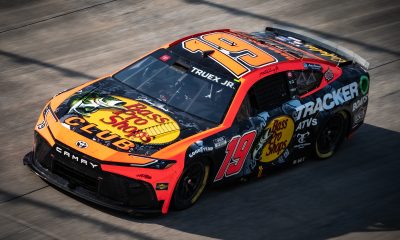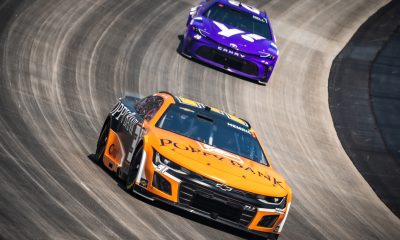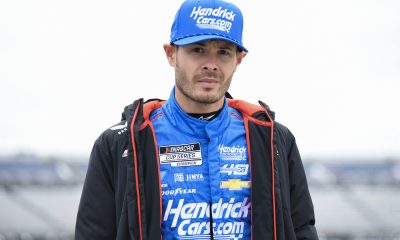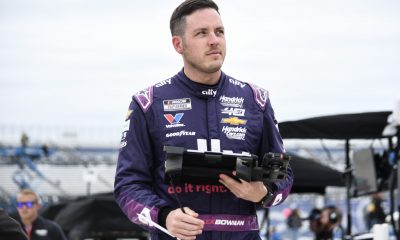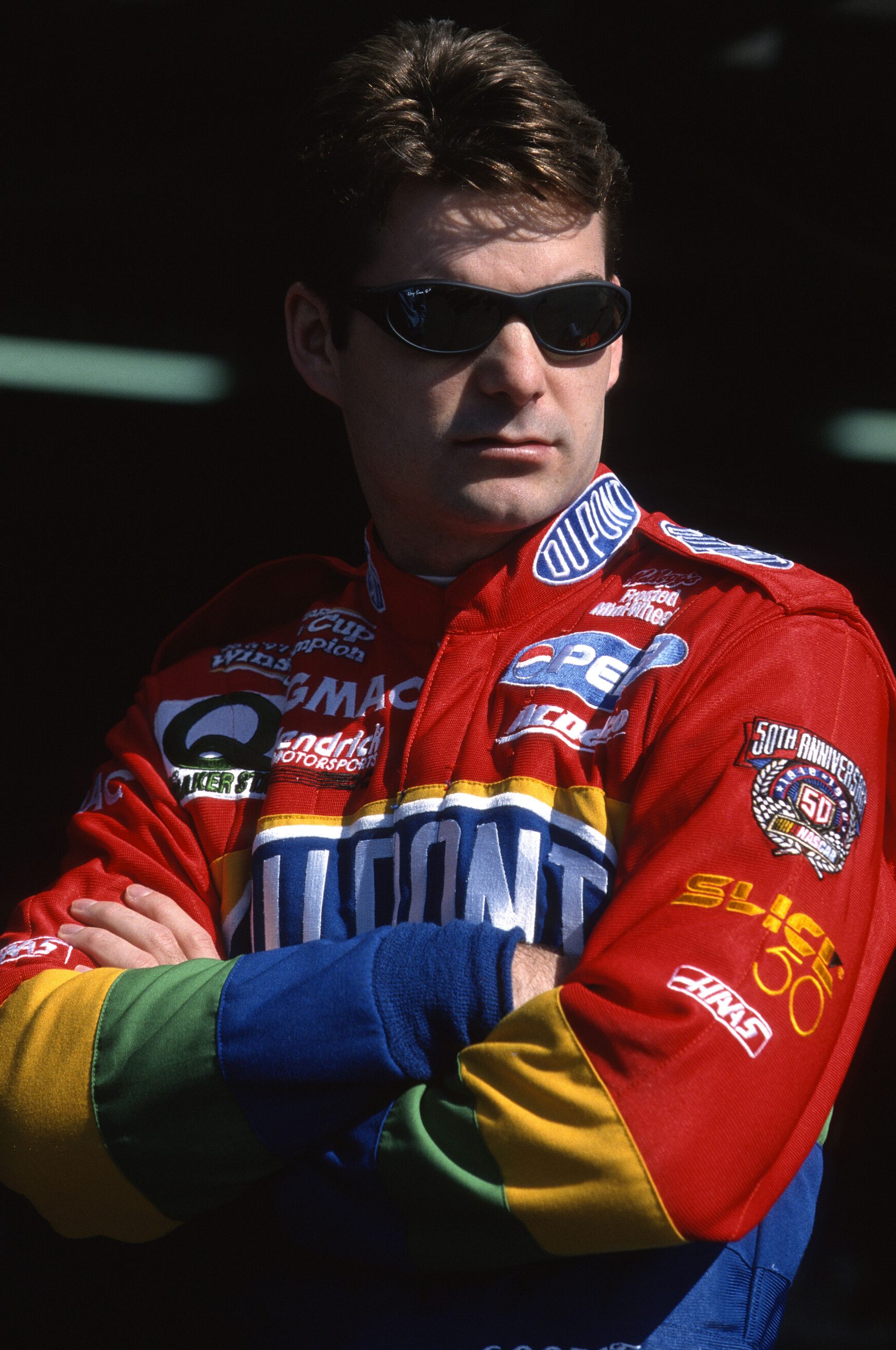
Jeff Gordon entered the 1998 NASCAR Cup Series season as a two-time and defending champion. (Photo: © 1998, Nigel Kinrade NKP)
LEANDER, Texas – Prior to the start of the 1998 NASCAR Cup Series season, Jeff Gordon was the marquee name representing stock car and motorsports across the country. Simply put, Gordon was a transcendental champion recognized by stock car fanatics and schoolchildren who traded diecast cars during recess.
No matter how proficient one’s knowledge of NASCAR was during the winter of 1997-’98, Gordon’s likeness, name and unmistakable No. 24 DuPont Automotive Finishes Chevrolet Monte Carlo were iconic and omnipresent. Gordon had Madison Avenue appeal with the skills and savvy of a North Carolinian raised on four wheels and a stock car shell from Day 1.
Heading into 1998, NASCAR celebrated its 50th anniversary season, a significant milestone commemorated by a myriad of merchandise opportunities, heavy TV presence on multitudes of networks and a strong online presence. During a time when baseball was recouping from the 1994 strike and sports fans flocked to learn about the next superstar athlete, Gordon was a refreshing face amongst the crowd.
Gordon won his second Cup championship with 10 victories, 22 top fives and 23 top 10s. Despite his incredible successes, fueled by his natural talents and an equally impressive team, at the shop and track, led by Ray Evernham, a legendary crew chief, the Vallejo, California native was a polarizing figure.
Still, whether fans loved or detested Gordon, he brought a lot of new eyes into NASCAR, whether at home with the TV on or at the nearest, newest track that joined the Cup schedule. Moreover, Gordon represented the new wave and era of stock car competition who did not follow a traditional path into this series.
Prior to 1998 Daytona Speedweeks, Gordon had the unenviable task of besting his 1997 championship season. How could the then 27-year-old, 29-time Cup race winner top a sparkling year?
On top of that, Gordon’s competition elevated their craft. Consider the following:
- Ford rolled out the state-of-the-art Taurus, the Thunderbird’s successor.
- Dale Earnhardt was motivated to shake off a winless campaign with crew chief Larry McReynolds.
- A new aerodynamic package, the five-and-five rule, was rolled out at all tracks except for the superspeedways at Daytona and Talladega.
If Gordon wanted his third championship, especially as he entered his eighth year, he needed to have the greatest season ever in the modern era. A glance at Gordon’s statistics does not do justice for one of the most unforgettable performances to this day.
During the EchoPark Automotive Grand Prix race weekend at Circuit of the Americas in Austin, Texas, I caught up with Gordon to get his story, in his words. In the first of this two part interview, Gordon walks us through the early portions of the year and the wakeup call that he needed to pursue his third championship.
Rob Tiongson : Jeff, we’re here to talk about 1998. But what why would we talk about 1998? Well, listen, I’m Mr. Anniversary for you, because it’s been 25 years (since 1998).
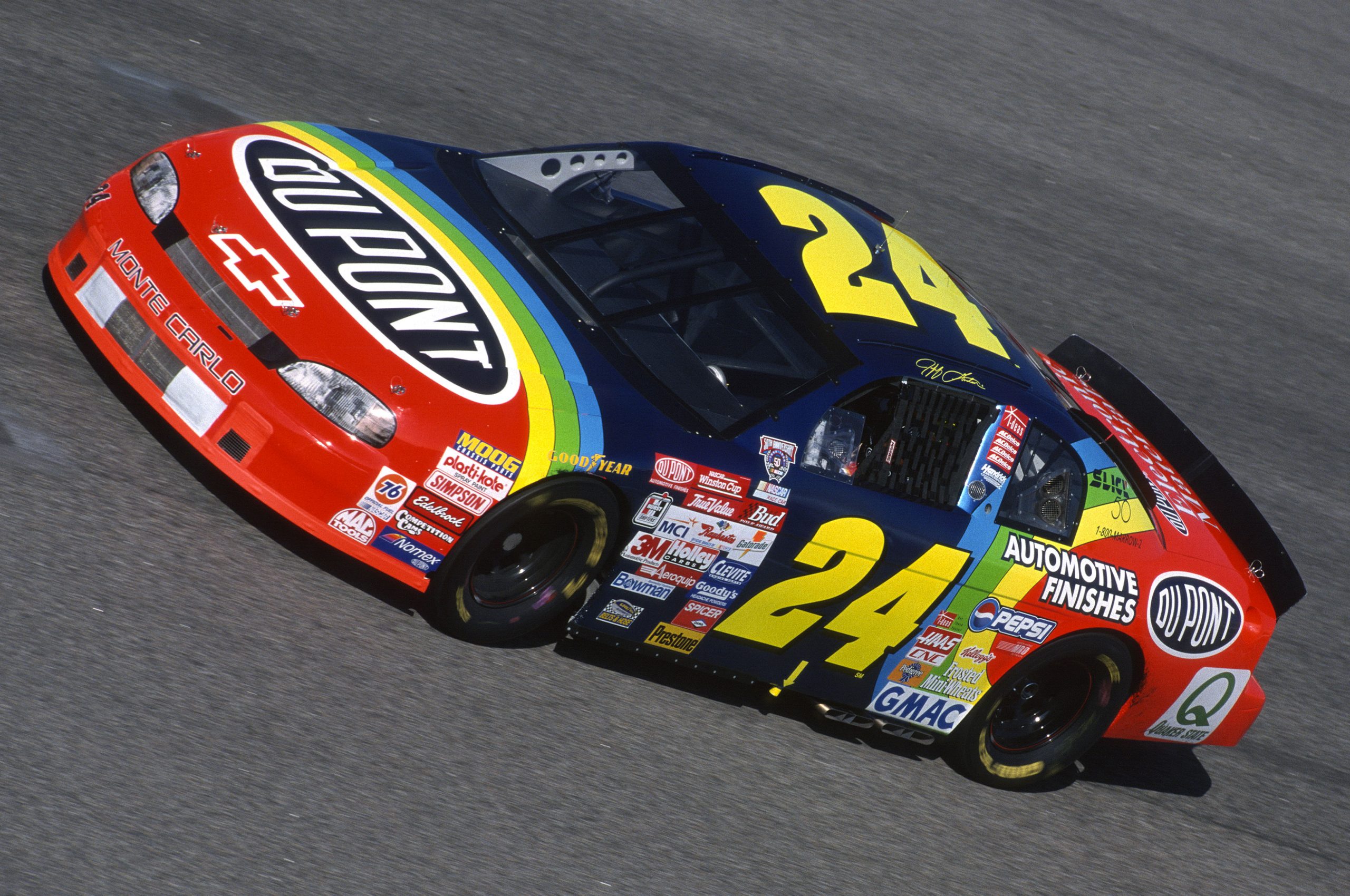
Gordon had to work ardently on defending his second NASCAR Cup Series championship. (Photo: © 1998, Nigel Kinrade
NKP)
Jeff Gordon : Now, you’re making me feel old! Well, most of the time, I would say to you, “That’s way too far in the past. I can’t remember.” But 1998 is one of those special years where we won a lot and won the championship. So it’s one that I don’t mind talking about going back into the past.
Tiongson : I figured that’s because that’s what you mentioned in January. So I’m fulfilling that promise to you.
Gordon : You got it. We can talk about 1998 every day of the week.
Tiongson : Believe it or not, Jeff, I’m gonna ask you questions that 13 year old Rob wrote in Boston, Massachusetts, so are you prepared for them?
Gordon : I’m ready! I think so.
Tiongson : Alright. Well, he’s all grown up now. So this one’s a tough one. Because in 1998, we began with the Daytona 500. It was Dale Earnhardt’s finest hour. It was also a chance for you to win your second Daytona 500. I recall you started 29nd, got to the lead, and then you had some problems at the end. How frustrating was it to come so close to winning your second Daytona 500 in so many years?
Gordon : Yeah. I mean, the year before, winning it and having a one, two, three finish for Hendrick Motorsports is really special. So when you when you find your way to Victory Lane for the first time, the Daytona 500, you build confidence in yourself and your position because you’re making as well as what’s happening with the team. So yeah, we came in ’98, I think, maybe even more prepared than we did in ’97.
I don’t remember why we didn’t qualify well, or what happened in the Duels to take us that far back to the starting grid. But (we) worked our way forward, had a great car, had a car capable of winning, and it just wasn’t meant to be our day, if I remember.
I think a few years earlier, we had an engine problem. So I don’t remember exactly what took us out of contention. I just remember we were really strong that day and didn’t win it.
Tiongson : Yeah, well, I can tell you it was a cylinder that dropped.
Gordon : Okay. It was an engine problem. So yeah, all of these races run together. But, you know, those 90’s, from ’95, I mean, even ’93, my rookie year, but through those 90’s, we just had such a strong package and we’re such a strong team. And I felt like we could have won every year at Daytona, for sure.
Tiongson : You made up for it in 1999, which I’m sure we’ll talk about down the road. But a week after, things got better. I mean, it was the first race with the five-and-five rule. You qualified forth…
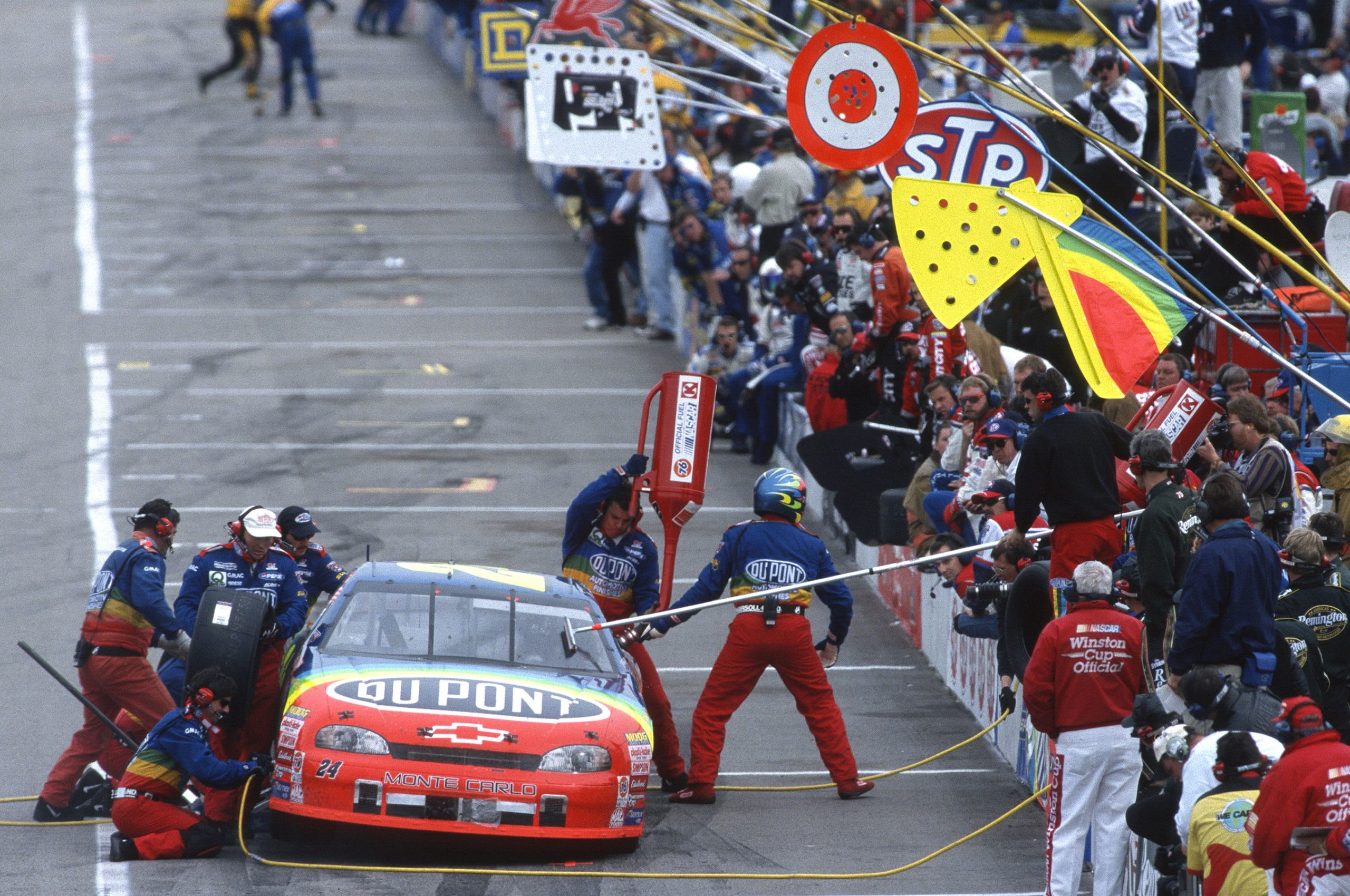
Gordon’s “Rainbow Warriors” pit crew service the No. 24 DuPont Chevrolet at Rockingham Speedway on Feb. 22, 1998. (Photo: © 1998, Nigel Kinrade NKP)
Gordon : Let’s talk about the five-and-five rule. Okay, so the five-and-five rule, it was basically a five inch spoiler and I think a five inch minimum height on the on the front air dam.
So that was like this, “Oh, we got to do this because there were teams thinking, there was advantages of what the Chevy had and what the No. 24 car was working with.” And so, I feel like this five-and-five rule was something that was supposed to bring the field closer together. And I think it only made us better.
Tiongson : Kind of kind of counterintuitive, wouldn’t you say?
Gordon : Yeah, I mean, we were just so good at that time (with) just meaning in every aspect. Looking at the aerodynamics of a car, of course, the Monte Carlo is still very strong at that time. I think just just the details that you still see today that Hendrick Motorsports works within to make the cars strong each and every week and on so many different types of racetracks.
I was certainly driving with confidence. The pit crew was strong on pit road, Ray and the calls that he was making, the cars that he was bringing, the resources and just everything culminated through those mid 90s and especially in 1998. So while Daytona was disappointing, we were happy to get back to the racetrack and make up for for the loss in Daytona.
Tiongson : That was a comeback because I remember at one point, you dropped to 29th place and almost got lapped. And then Darrell Waltrip was saying, “If Jeff Gordon can’t run squat, we’re in a lot of trouble.” And then all of a sudden, I don’t know if you heard his interview or not, I don’t think you did. But you came back and won that race. How exciting was that for you to go back through that?
Gordon : Very exciting. I mean, Rockingham was one of my favorite tracks and one of the first tracks I ever competed at in NASCAR. But it was a difficult track (and) very abrasive. It was easy to get off on the setup or if you had an issue on pit road, it’s hard to make up for it.
So, I knew it was one of our best tracks and and we had some challenges that day and we were able to overcome them. So to do that on such a challenging, difficult racetrack under those circumstances, I think that’s that’s what really set the season into motion that we had in 1998.
Tiongson : It did for sure. And it seems like in 1998 you were the year having the year of having four consecutive wins. Which one stands out more to you – winning four straight Food City 500s at Bristol or four straight Southern 500s at Darlington?
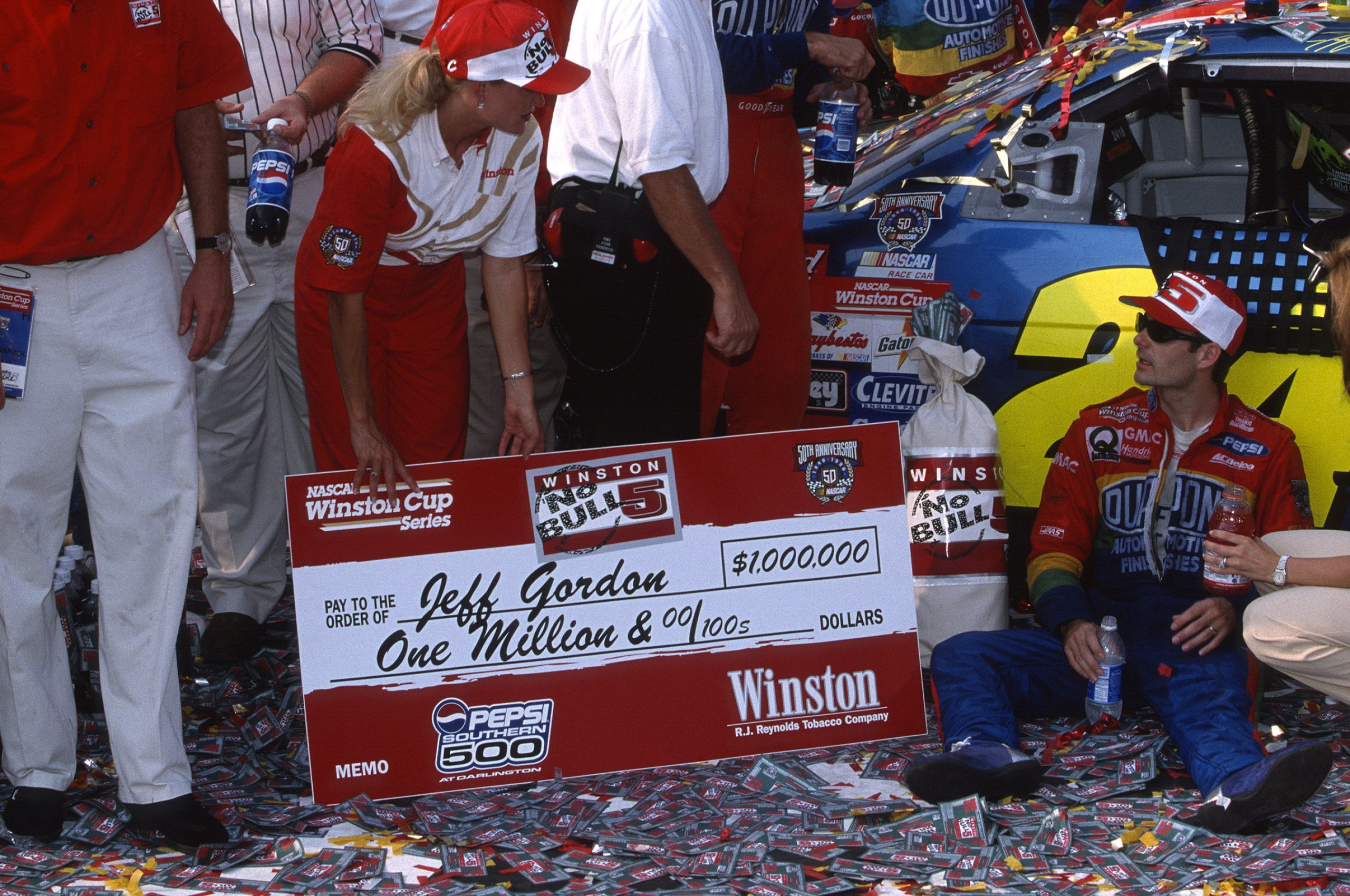
All in a hard day’s work for Gordon at Darlington. (Photo: © 1998, Nigel Kinrade NKP)
Gordon : Whew! Oh man, they’re both real standouts for me, because I love both of those tracks, but both have their own unique challenges.
I think Darlington maybe stands out more because it is such a prestigious race, the Southern 500. You know how difficult that track is to just keep a car in one piece. You run right next to the wall, really easy to damage the car, let alone managing the tires.
It’s easy to have a lot of failures at that track because of all the grit and sand on the racetrack. So if I had to pick one, I would say the Southern 500, four in a row, that’s impressive.
Tiongson : Twice in those years, you beat Jeff Burton for the million dollar bonus. Has he never let you live it down?
Gordon : It might stick with him. And for me, I got the better end of the day. (laughter) So I’m ok with it! You’d have to interview Jeff to ask him but certainly that race with what was on the line, all the build up, and knowing that prize hadn’t been won since Bill Elliott did it in the 80s.
So it was certainly something we put a lot of effort into. And then for it to come right down to the end, I brushed the wall, I damaged the car. I was like, “Oh no, I’ve given it up. I’ve lost this when we had it in control”. And then Jeff was coming on strong regardless.
It’s probably what pushed me into making that mistake. And then we held him off, which was really, really cool.
Tiongson : I will have to follow up with JB about this.
Gordon : I’m sure he has a much different take than I do! (chuckles)
Tiongson : And maybe a little bit colorful metaphors along the way, too.
Gordon : Yes. (smiles)
Tiongson : So, let me ask you this. I know that ’98 season, at the beginning, y’all were trying to figure out the five-and-five rule and the intermediate track struggles, but then the Coke 600 was probably the first seminal moment that things turned around.
What do you recall about that we week from winning the pole, missing the penultimate practice, and then all of a sudden, you were in the mix with those Fords in the end?
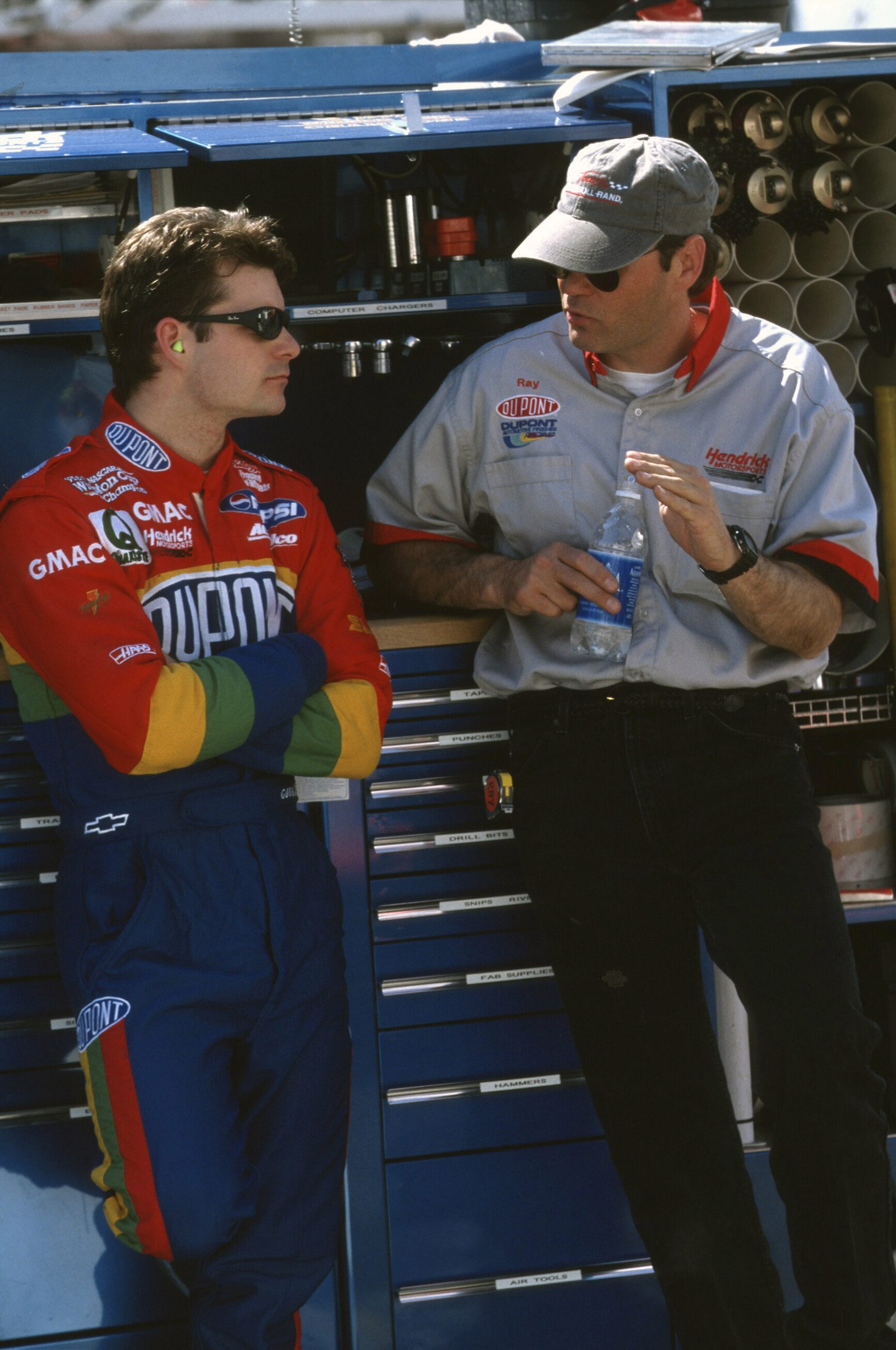
Gordon and Evernham were like Magic Johnson and Pat Riley. (Photo: © 1998, Nigel Kinrade NKP)
Gordon : Well, this is why I love catching up with Ray Evernham as often as I can and reliving these moments in our careers together, but especially 1998. He’ll probably tell you that as upset as he was that I missed that practice, and there’s a whole other story that goes along with that, of how that really change.
It was a pivotal moment, kind of in the whole season, because it reenergized myself (and) my commitment. I was so disappointed in myself by missing that final practice, showing up to the track, seeing the car damaged, because they asked Terry Labonte to get in the car. He cuts a right front tire down (and) luckily didn’t damage it worse than he did.
And then we come and win the race the next day. And then that was like, “Here we go.” I think what it did was it just made me realize how hard my team works and that they deserve more from me, really.
I said, “I’m gonna give them everything I possibly can.” And I did and the combination was really, really strong the rest of the year.
Editor’s Notes
Special thanks to Jeff Gordon for following through with our prior interview in January to talk about 1998! Also, thanks to Jon Edwards and Ashly Ennis for their kindness and support with this special story to commemorate NASCAR’s 75th anniversary season.
Look for Part II of “The Greatest Season Ever: Jeff Gordon’s 1998 NASCAR Championship” on Wednesday evening! Lastly, this feature is dedicated to my parents, Virgilio and Elizabeth, as they celebrate their 43rd wedding anniversary, my late mentor, Steve Byrnes, a beloved motorsports TV journalist of TBS, TNN, CBS and FOX.
Rob Tiongson is a 30-something motorsports journalist who enjoys sports like baseball, basketball, football, soccer, track and field and hockey. A Boston native turned Austinite, racing was the first sport that caught his eyes. From interviews to retrospective articles, if it's about anything with an engine and four wheels, it'll be here on TPF, by him or by one of his talented columnists who have a passion for racing. Currently seeking a sports writing, public relations, or sports marketing career, particularly in motorsports. He enjoys editing and writing articles and features, as well as photography. Moreover, he enjoys time with his family and friends, traveling, cooking, working out and being a fun uncle or "funcle" to his nephew, niece and cat. Tiongson, a graduate of Southern New Hampshire University with a Bachelor of Arts in Communication, pursues his Master of Arts in Digital Journalism at St. Bonaventure University. Indeed, while Tiongson is proud to be from Massachusetts, he's an everywhere kind of man residing in Texas.

